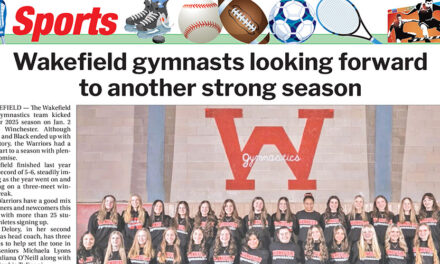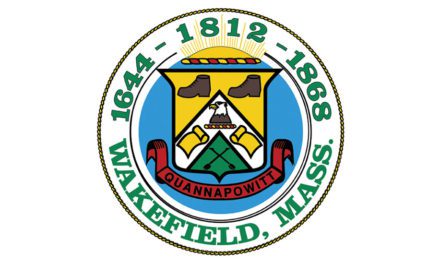By MARK SARDELLA
The plan to get you out of your single-family home and private vehicle is proceeding apace as we forge ahead toward our collective future.
The latest phase in this great leap forward has been promulgated by the Commonwealth of Massachusetts, which is in the process of forcing it on local cities and towns with MBTA service, like Wakefield.
A new state law requires that every MBTA community shall have at least one zoning district of reasonable size in which multi-family housing is permitted as of right. This district shall be located not more than 0.5 miles from a commuter rail station, subway station, ferry terminal or bus station.
When they say that multi-family housing shall be permitted “as of right,” it means that a developer won’t need to bother going to the Zoning Board of Appeals to get a Special Permit or other relief. He can just go right ahead and construct more multi-family housing projects wherever he can squeeze them in.
Like everything these days, this is all about “equity.”
You worked hard to earn your modest single-family home with a patch of grass in suburbia.
And that’s not fair.
According to the Department of Housing and Community Development, “Massachusetts has among the highest, and fastest growing, home prices and rents of any state in the nation.” These rising costs, they tell us, “have dramatically increased financial pressures on low and middle-income families, forcing them to sacrifice other priorities in order to pay housing costs.”
I’m confused. Haven’t we been told repeatedly by those trying to sell us a new high school that higher property values are a good thing? Now we’re being told that our home prices are too high.
I learned a long time ago not to expect consistency from the Central Planners, so allow me to translate: Because some of you have nice homes, we must now make it even easier for developers to come in and alter the character of your town by building more multi-family housing projects.
It’s called “equity.”
“This law is not a housing production mandate,” according to Massachusetts Executive Office of Housing and Economic Development director Mike Kenneally.
True. It’s much more than that.
“It is all about setting the table for more transit-oriented housing in the years and decades ahead,” Kenneally added, “which is not just good housing policy, but good climate and transportation policy, too.”
Oh, good. I was worried we had forgotten about the climate.
The DHCD indicates that, by requiring this new zone to be near public transit, this initiative “will reduce reliance on single occupancy vehicles, which helps in our larger effort to confront the climate crisis.”
It’s part of a “larger effort,” alright. But it has little to do with housing, transportation or climate. The real target here is your private property, namely your single-family home and your “single-occupancy” vehicle.
It’s not just Massachusetts. The state of New York is also launching an attack on local control and single-family zoning through something called the “Housing Compact.”
Like Massachusetts, New York is compelling communities within half a mile of MTA train stations to meet state-imposed targets aimed at increasing high density, multi-family housing.
Sound familiar? Originality is not common among control freaks.
And again, it’s not really about transportation or housing or climate or even equity.
No. The Central Committee has something much broader in mind.
In our classless future, you will learn to live cooperatively in triple-deckers and high-rises. And we can’t have people going wherever they want, whenever they want, in private automobiles. The state will provide mass transit to approved destinations.
Which brings us to a little thing called “Transportation Demand Management,” or TDM. It’s all the rage in Fabian enclaves like Cambridge and Watertown and is starting to make its way out to the provinces.
Wakefield’s Director of Community and Economic Development Erin Kokinda recently introduced the Zoning Board of Appeals to her vision for bringing TDM to Wakefield.
She told the ZBA that the ultimate goal of TDM is “to shift away from single-occupancy vehicles and provide alternative modes of transportation including public transit, carpooling, van pooling, ride-sharing, walking and cycling.”
Some of the benefits of TDM, according to Kokinda, include conserving energy and reducing carbon emissions, reduced wear and tear on roads and bridges, improving community health and fitness levels and, of course, “achieving equity.”
Kokinda noted that the ZBA has been implementing some TDM practices already, such as requiring the developer of 200 Quannapowitt Parkway to provide shuttle service to the train station and to the downtown business district.
Giant, national development corporations with unlimited resources like Cabot Cabot & Forbes are happy to indulge whatever whimsy has captured the fancy of local regulators. It’s the small, local builder who will be pulling his hair out when told that he has to provide shuttle service between his 15-unit apartment building and the train station.
Oh, and did we mention that the shuttle bus is going to have to be electric?
The train is leaving the station. All aboard the Equity Express.




